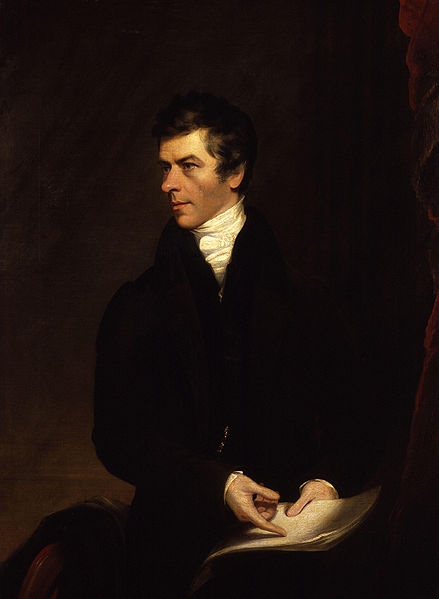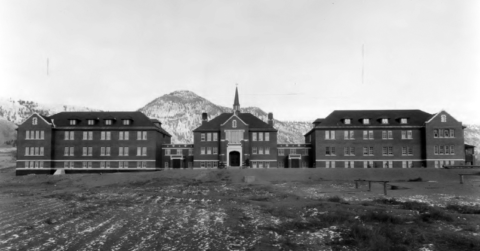Rex Krueger
Published 16 Jun 2021Build an authentic Mission Bench with simple tools and a small amount of wood.
Get the Plans: https://www.rexkrueger.com/store/xyg2…
Get my new book!: https://amzn.to/3uQtdQr
More video and exclusive content: http://www.patreon.com/rexkruegerCheck out Woodworkforhumans.com: http://www.woodworkforhumans.com
———————————————————————-
Build the Lightweight Traveler Workbench: https://youtu.be/lPiMjv7lkqI
Get the Plans: https://www.woodworkforhumans.com/sto…———————————————————————-
Links to tools in this build (affiliate):
Square Cut nails: https://amzn.to/2TDjKz6
Tapered Drill Bits: https://amzn.to/3iKoQUx
(I used #8 for this build, but buying the set allows you to get the right bit for your project.)
Protractor: https://amzn.to/35ohVbM
Hand-screw clamps: https://amzn.to/35pSZk7___________________________________________
Make the tools from this build!
The Advanced Shooting Board
Video: https://youtu.be/JbpwDufvzSo
Plans: https://www.rexkrueger.com/store/adva…Make a Turning Saw from Scraps
Video: https://youtu.be/8Agk6tJtRs0
Plans: https://www.rexkrueger.com/store/diy-…———————————————————————-
Visit La Purisima Mission: https://www.lapurisimamission.org/
———————————————————————-
Sign up for Fabrication First, my FREE newsletter: http://eepurl.com/gRhEVT?
———————————————————————-
Wood Work for Humans Tool List (affiliate):
*Cutting*
Gyokucho Ryoba Saw: https://amzn.to/2Z5Wmda
Dewalt Panel Saw: https://amzn.to/2HJqGmO
Suizan Dozuki Handsaw: https://amzn.to/3abRyXB
(Winner of the affordable dovetail-saw shootout.)
Spear and Jackson Tenon Saw: https://amzn.to/2zykhs6
(Needs tune-up to work well.)
Crown Tenon Saw: https://amzn.to/3l89Dut
(Works out of the box)
Carving Knife: https://amzn.to/2DkbsnM
Narex True Imperial Chisels: https://amzn.to/2EX4xls
(My favorite affordable new chisels.)
Blue-Handled Marples Chisels: https://amzn.to/2tVJARY
(I use these to make the DIY specialty planes, but I also like them for general work.)*Sharpening*
Honing Guide: https://amzn.to/2TaJEZM
Norton Coarse/Fine Oil Stone: https://amzn.to/36seh2m
Natural Arkansas Fine Oil Stone: https://amzn.to/3irDQmq
Green buffing compound: https://amzn.to/2XuUBE2*Marking and Measuring*
Stockman Knife: https://amzn.to/2Pp4bWP
(For marking and the built-in awl).
Speed Square: https://amzn.to/3gSi6jK
Stanley Marking Knife: https://amzn.to/2Ewrxo3
(Excellent, inexpensive marking knife.)
Blue Kreg measuring jig: https://amzn.to/2QTnKYd
Round-head Protractor: https://amzn.to/37fJ6oz*Drilling*
Forstner Bits: https://amzn.to/3jpBgPl
Spade Bits: https://amzn.to/2U5kvML*Work-Holding*
Orange F Clamps: https://amzn.to/2u3tp4X
Screw Clamp: https://amzn.to/3gCa5i8Get my woodturning book: http://www.rexkrueger.com/book
Follow me on Instagram: @rexkrueger
June 17, 2021
Build a Mission Bench with Simple Nailed Joinery // Hand tool woodworking
Encouraging innovation by … rejigging the honours system
In the latest Age of Invention newsletter, Anton Howes considers how one man’s efforts to encourage and reward innovation in the United Kingdom eventually led to “mere inventors” receiving honours that once were dedicated to military paladins and political giants:

Henry Brougham, 1st Baron Brougham and Vaux, by James Lonsdale (died 1839), given to the National Portrait Gallery, London in 1873.
Image from the National Portrait Gallery via Wikimedia Commons.
One of my all-time favourite innovation evangelists is the nineteenth-century barrister, journalist, and politician Henry Brougham. He was an innovator himself, in the late 1830s designing a form of horse-drawn carriage, and as a teenager even managed to get his experiments on light published in the Royal Society’s prestigious Transactions. But his main achievements were as an organiser. Clever, dashing, and articulate, the son of minor gentry, he was an evangelist extraordinaire. In the 1820s he helped George Birkbeck to found the London Mechanics’ Institute (which survives today as Birkbeck, University of London), was instrumental in the creation of University College London (to provide a university in England where you didn’t have to swear an oath to the Church of England), and founded the Society for the Diffusion of Useful Knowledge (to print reference works and textbooks cheaply and in bulk). They were all organisations intended to widen access to education, spreading science to the masses.
He also presided at the opening of many more worker-run mechanics’ institutions, libraries, and scientific societies. As a Member of Parliament who went out of his way to support workers’ efforts at self-education, even though none of them could vote, Brougham thus became something of a celebrity to working-class inventors. John Condie, born in Gorbals, Glasgow, to poor parents, and apprenticed to a cabinet maker, would become a prolific and successful improver of iron-making, locomotive springs, and photography, as well as an inspiring lecturer on scientific subjects in his own right — his students at the Eaglesham Mechanics’ Institution were reportedly so engrossed that they would attend his evening classes until midnight. Having once exhibited a model steam engine at the opening of the Carlisle Mechanics’ Institution, however, Condie was reportedly “not a little proud” that Brougham — who had presided at the opening — recalled the model over thirty years later. The detail comes from Condie’s obituary notice in the local papers; I like to think that it was a story upon which he frequently dined out.
Brougham’s celebrity, I suspect, made him appreciate the usefulness of status and prestige, and his influence only grew when in 1830 he was made a lord and appointed Lord High Chancellor — a high-ranking ministerial position, which he held for four years. Brougham was soon behind many efforts to increase the visibility of inventive role-models. The nineteenth-century mania for putting up statues — to people like Johannes Gutenberg, Isaac Newton, and James Watt — often had Brougham or his political allies behind them. Brougham even hoped that while the “temples of the pagans had been adorned by statues of warriors, who had dealt desolation … ours shall be graced with the statues of those who have contributed to the triumph of humanity and science”.
His hero-making extended to print, too, when in the 1840s his Society for the Diffusion of Useful Knowledge embarked on publishing a comprehensive biographical dictionary — an early forerunner to the Oxford Dictionary of National Biography, but with the extraordinary aim of covering notable individuals from all over the world. It managed to print seven volumes covering the letter “A” before financial considerations forced the whole society to cease, but in 1845 Brougham published Lives of Men of Letters and Science who Flourished in the Time of George III, in which he showcased a handful of eighteenth-century literati and scientists from whom readers were to draw inspiration.
And Brougham tried to raise the status of inventors who were still living. This was done by co-opting a Hanoverian order of chivalry, the Royal Guelphic Order (by this stage the kings of the United Kingdom of Great Britain and Ireland were also simultaneously the kings of Hanover). The order was generally used to recognise soldiers, but an interesting precedent had been set when the astronomer Frederick William Herschel, the discoverer of Uranus, had been made a knight of the order in 1816. So when Brougham rose to power in the 1830s, he envisaged using it more widely, to recognise inventors, scientists, and medical pioneers, as well as literary scholars like museum curators, archivists, antiquarians, historians, heralds, and linguists. Thanks to Brougham’s machinations, the knighthood of the order was offered to the mathematician James Ivory, the scientist and inventor David Brewster, and the neurologist Charles Bell (after whom Bell’s Palsy is named). It was later also awarded to serial inventors like John Robison, who improved the accuracy of metal screws, experimented with cast iron canal locks and the water resistance of boats, and applied pneumatic presses to cheesemaking.
One problem, however, was that the Royal Guelphic Order was considered second-rate. It was technically a foreign order, and did not actually entitle one to be called “Sir” in the UK. The mathematician and computing pioneer Charles Babbage was apparently insulted to have been fobbed off with the offer of a Guelphic knighthood instead of a British one. Although William Herschel had accidentally been called “Sir” during his lifetime, this was soon realised to be a mistake in protocol. When his son John — a scientific pioneer in his own right — was also made a knight of the order, he was also quietly knighted normally a few days later so that the rest of the family would be none the wiser. And regardless, the whole scheme came to an end with the accession of Queen Victoria in 1837 — as a woman, she did not inherit the throne of Hanover, and so appointments to the Guelphic order simply passed out of British control.
The Real Indiana Jones and his Jurassic Quests | BETWEEN 2 WARS I E.20 Summer 1923
TimeGhost History
Published 16 Jun 2021On their search for the origins of humanity, the expedition led by Roy Chapman Andrews makes some amazing discoveries in the Gobi Desert, including the uncovering of dinosaur eggs and velociraptors. Who knew paleontology could be so cool?
(more…)
Canada’s most recent bout of mourning sickness
In Wednesday’s NP Platformed, Colby Cosh reports on a shocking incident in Dunnville, Ontario where a Catholic priest discovered and threw away some shoes that had been deposited on a bench in front of his church. This ***obviously*** was some sort of hate crime by the priest personally and the entire hierarchy of the Catholic church collectively all the way up to the Pope which must now be tearfully acknowledged and repented of in multiple media appearances, because the items were part of an informal, unofficial memorial to the long-deceased children whose unmarked graves were discovered at a former residential school in British Columbia.

Kamloops Indian Residential School, 1930.
Photo from Archives Deschâtelets-NDC, Richelieu via Wikimedia Commons.
Ne Hiyawak seemingly didn’t ask permission to leave the shoes at the church, or give the pastor any notice; the next day, when others seeking to do the same thing explained what they were up to, the priest allowed an enormous pile of stuffed animals and handmade signs to be created on the front steps of the building.
A natural next question may be whether these mementoes will be allowed to obstruct the church door forever. Can it be that these items, too, are certain to end up in the garbage after sitting around amid the elements for a few days? (If you want to recycle an old stuffed animal and thereby guarantee that it finds its way into the hands of a child, actually finding such a child yourself is the only appropriate procedure.)
NP Platformed would like to suggest very gently that temporary “memorials” constructed by leaving stuff on common property, or on someone else’s property, should be discouraged by the press rather than encouraged. We have all driven past a mildewed or long-rotted bundle of plastic-wrapped flowers lying in a ditch or on a corner where someone died: this has somehow become the last acceptable form of littering, a vice our civilization once embraced, and had to work hard to mitigate.
Eventually, someone or other, probably a custodial professional paid peanuts, has to pick all that stuff up. We’re not sure how this isn’t obvious, or why it ought to be controversial. If you want to festoon a church with protest materials, and you do this precisely because you have a well-founded disrespect for the church, we are not sure anyone can justly complain when the materials are removed.
The Catholic Church may be monstrous, but the creation of memorials consisting of piles of items like shoes puts its stewards in an impossible position. If you remove the items too soon, you’re being disrespectful. If you leave them lying around long enough to become an eyesore, that’s surely no less disrespectful. There is a stubborn segment of the public that cannot resist this sociopathic behaviour, but it should be observed that in publicizing these stunning and brave makeshift memorials, the news media always photograph them at their very nicest (which is never all that nice) and walk away. Those who have to collect the detritus are never asked their opinion, nor are those unfortunates who merely live nearby.
MG-34: The Universal Machine Gun Concept
Forgotten Weapons
Published 7 Oct 2017The MG34 was the first German implementation of the universal machine gun concept — and really the first such fielded by any army. The idea was to have a single weapon which could be used as a light machine gun, heavy machine gun, vehicle gun, fortification gun, and antiaircraft gun. The MG34 was designed to be light enough for use as an LMG, to have a high enough rate of fire to serve as an antiaircraft gun, to be compact and flexible enough for use in vehicles and fortifications, and to be mounted on a complex and advanced tripod for use as a heavy machine gun.
Mechanically, the MG34 is a recoil operated gun using a rotating bolt for locking. It is chambered for 8mm Mauser, and feeds from 50-round belt segments with a clever and unique quick-change barrel mechanism. The early versions were fitted with adjustable rate reducers in the grips allowing firing from 400 to 900 rounds per minute, and also had an option for a top cover which would fit a 75-round double drum magazine. Both of these features were rather quickly discarded, however, in the interest of more efficient production. However, the gun fulfilled its universal role remarkably well.
The MG34 was considered a state secret when first developed, and despite entering production in 1936 it would not be formally adopted until 1939 — by which time 50,000 or so had already been manufactured. It would comprise about 47% of the machine guns in German service when the Wehrmacht invaded Poland, but would be fully standardized by March of 1941. It was replaced by the MG42 later in the war, as that weapon was both faster and cheaper to produce and also required substantially less of the high-grade steel alloys that Germany had limited supplies of. However, it would continue to be produced through the war, particularly for vehicle mounts.
http://www.patreon.com/ForgottenWeapons
Cool Forgotten Weapons merch! http://shop.bbtv.com/collections/forg…
If you enjoy Forgotten Weapons, check out its sister channel, InRangeTV! http://www.youtube.com/InRangeTVShow






